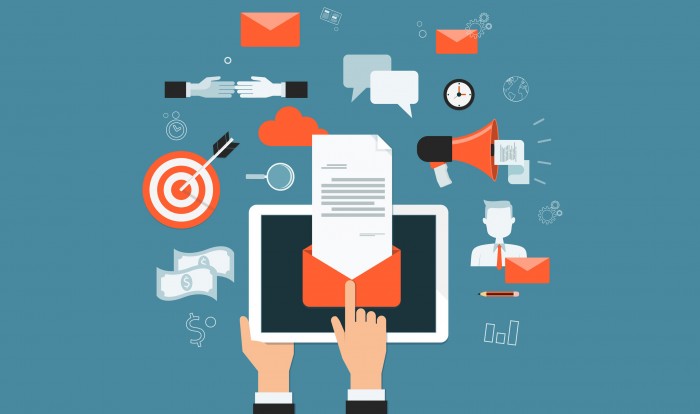Regardless of the different platforms used in the workplace today, email is still considered one of the most used professional communication tools. Over the years, the digital world has changed the way that we communicate with our peers, both socially and professionally. It’s tempting to type out a quick text message, send a silly Snapchat or Facebook message to get your questions answered and points across, but it’s just not the same as a good, old fashioned email!
Don’t worry, whether you’re new to the professional world or you just want to perfect your corresponding techniques with other professionals, these tips can help you become an expert in email etiquette!

Briefly introduce yourself
When emailing someone professionally, you can’t assume that they know or remember who you are. If you think they might not remember you, remind them who you are by beginning the email with a quick introduction to help them understand why you might be emailing them. This also helps the reader connect to you on a slightly more personal basis.
Concise subject line
The subject line is the first thing your recipient sees before opening up an email and can help catch the reader’s attention. It’s important to make sure the subject line is simple and understandable, but not too vague. If it’s too vague, it can end up looking like spam. It should be short and to the point and relatively descriptive of what is discussed in the email.
Know your audience
Before writing the email, think about who will be reading it. Is this person more on the formal side or are they a little more informal and laid back? You should write in the language that they would write in. (Note: if you are unsure of your recipient’s writing style, it’s wise to go with a more formal tone. You know what they say… it’s better to be overdressed than underdressed!)
Keep it simple
Making your emails simple and easy to read is an essential, yet often overlooked aspect of email writing for many people. According to Inc., white space is your friend when it comes to formatting. Spacing out different points and paragraphs throughout your email can make your message clean and easy to follow. It’s also important to keep your emails concise and stick to one main topic so you don’t overwhelm the reader. Following these rules will allow the recipient to easily scan and digest your email’s information.
Always proofread
There’s nothing that says “unprofessional” like typos and styling errors. Even if you don’t think there could possibly be any mistakes or typos in your email, let’s face it… there probably are. Just read over your message before clicking the send button. It may even be helpful to wait to insert the recipient’s email address until after you have finished writing and proofreading your email. I know it’s tempting to just type out your email and immediately hit send, but save yourself and proofread your writing.
Include a signature
After you’ve completed your email, it’s customary to conclude with a signature. It allows your recipients to get a final sense of who you are and help them learn more about you. Typically, your signature should include your name, company name, and any other contact information like your phone number or links to your social media accounts. If you’re composing an email on your mobile device, Business News Daily recommends deleting the “sent from iPhone” message at the bottom of your email. It can make you seem less professional.
Always address the person you’re emailing
Maybe you have been emailing back and forth with a coworker or future employer three or four times now and you are getting tired of starting every email with some variation of “Good afternoon Mr._____,” or “Hello Mrs.______,”. It may seem repetitive, but it is more professional to continue addressing your recipient throughout your email thread rather than stopping two emails in and immediately spewing out information at the beginning of your emails.
Avoid using abbreviations, emojis or slang
Using words and phrases meant for texting and informal social communication in your professional emails is not in your best interest. Abbreviations anywhere from “legit” to “totes” should be left out and replaced with the real word. If you type like an adult, you will be perceived as one. This also includes the use of emojis. There is a time and a place for your favorite emojis…but definitely not in a professional email.
Writing a professional email can be difficult and frustrating, but hopefully with the help of these eight tips and some practice, you can email like an expert in no time!



